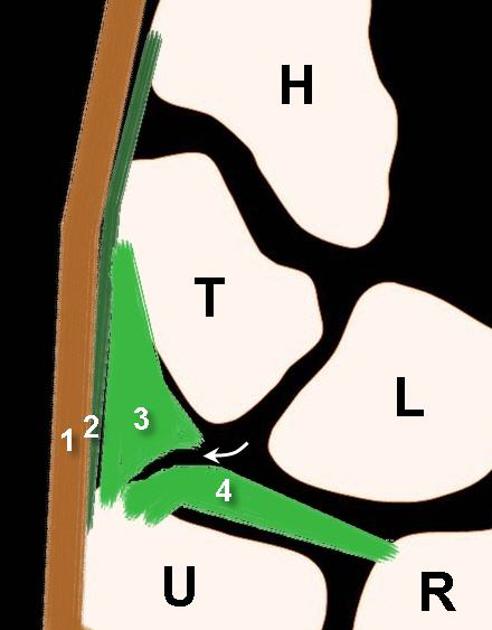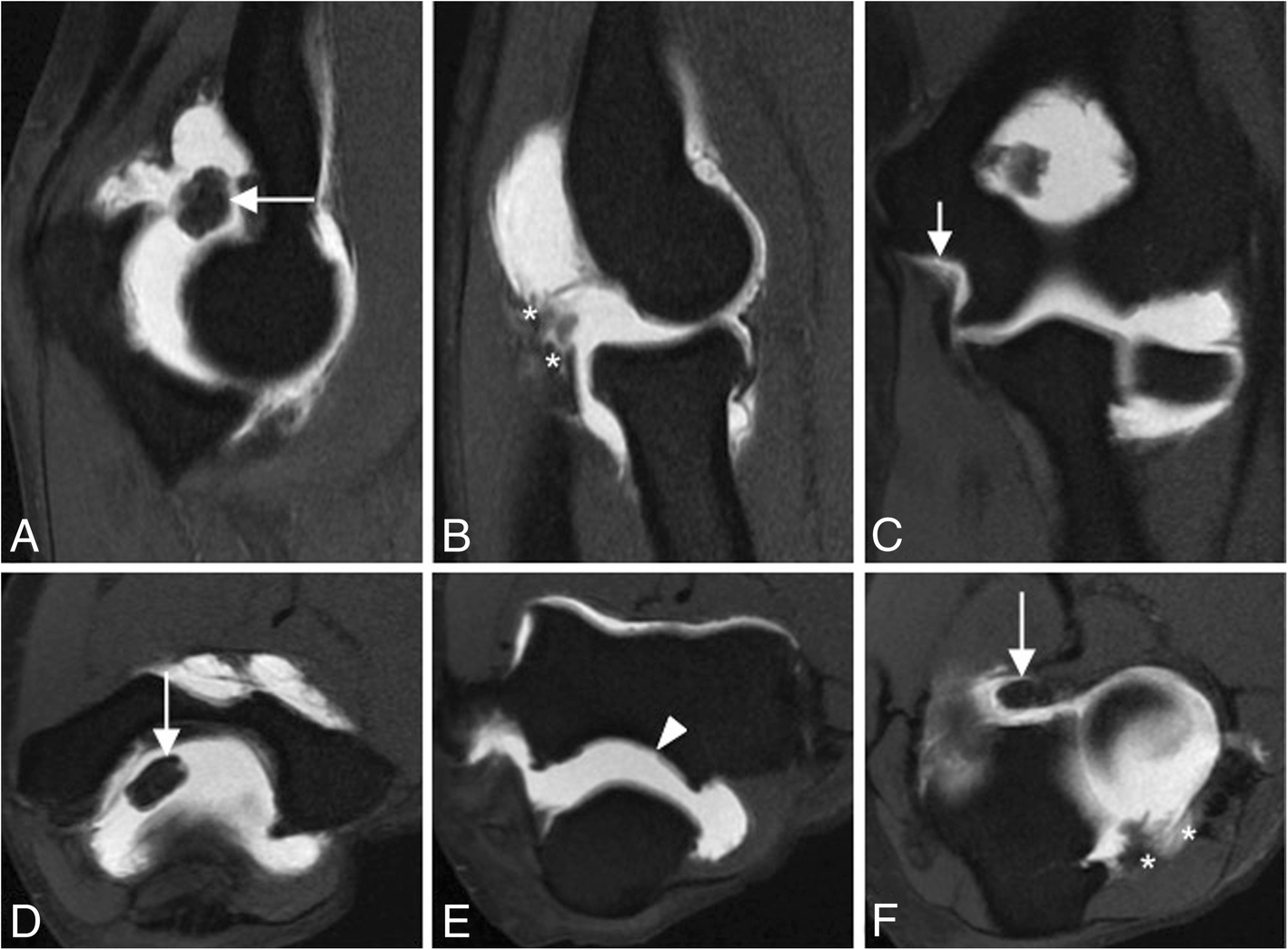Triangular fibrocartilage complex injury
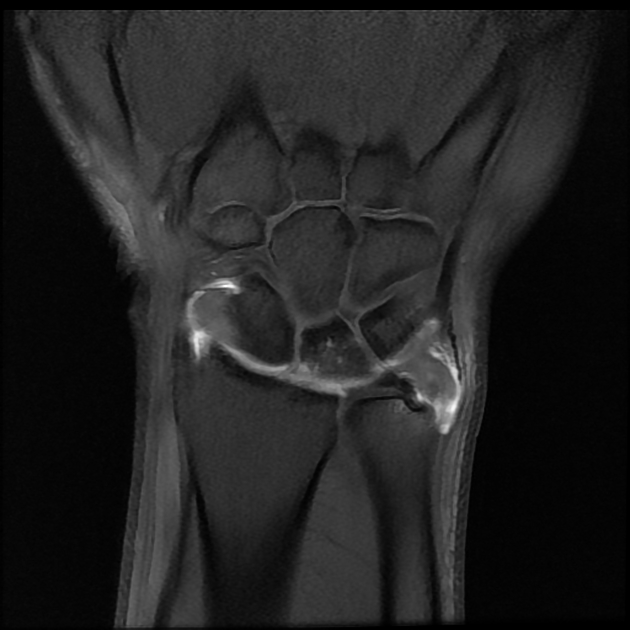

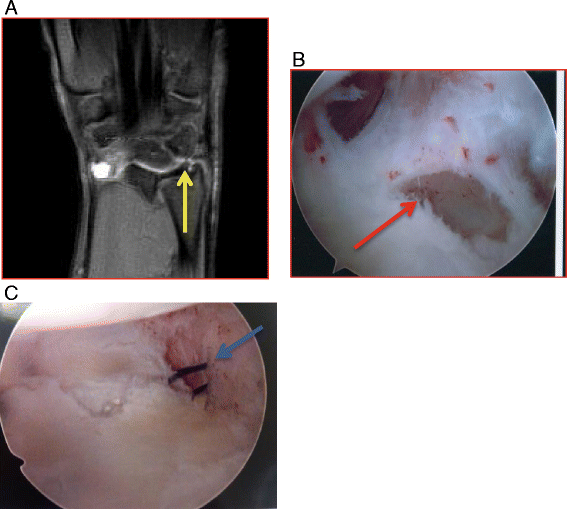
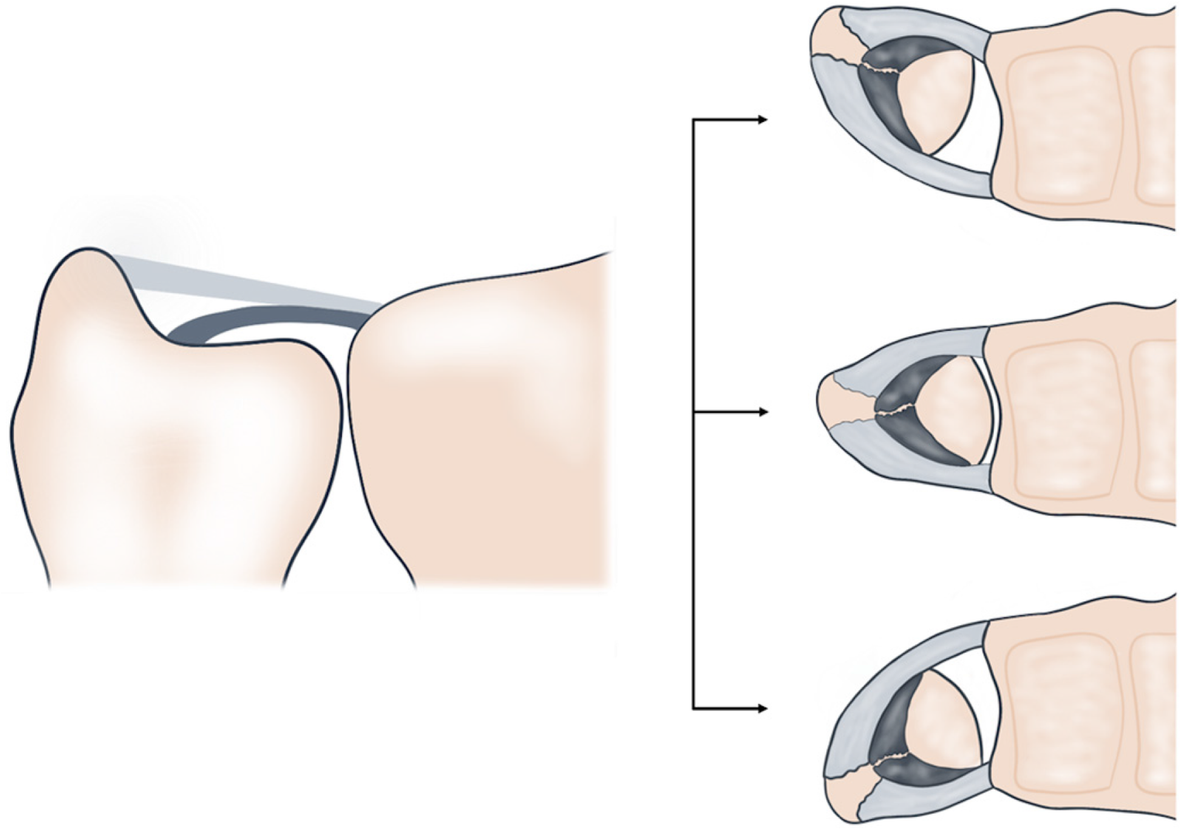


Triangular fibrocartilage complex (TFCC) injuries may be traumatic or degenerative in nature. The TFCC is a complex structure consisting of the triangular fibrocartilage (TFC) disc proper, ulnomeniscal homologue and numerous ligaments and tendons.
Clinical presentation
Traumatic injuries are usually symptomatic whereas degeneration of the TFCC is usually asymptomatic . Patients may present with ulnar-sided wrist pain, that is exacerbated by supination, pronation and/or ulnar deviation .
Pathology
Assessing the triangular fibrocartilage disc proper for injury is important but isolated injuries to the ulnomeniscal homologue or radioulnar ligaments can also lead to distal radioulnar joint instability.
Aside from assessing the triangular fibrocartilage disc proper, the following associated injuries should be assessed for :
- ulnar styloid avulsion fracture
- distal radial sigmoid notch fracture
- dorsal and volar distal radioulnar ligaments
- ulnotriquetral and ulnolunate ligament injuries
- lunotriquetral ligament injury
- extensor carpi ulnaris tendinopathy (including tendinosis, tear and/or instability)
- ulnar collateral ligament injury
- ganglion cyst formation (may be soft tissue or intraosseous)
Classification
- Palmer classification: helps for accurate recognition and diagnosis of TFCC injuries, however, injuries outside this classification system can occur .
- Atzei classification: offers a more differentiated approach on a spectrum of peripherally located tears.
Radiographic features
MRI
- triangular fibrocartilage tears
- fluid-intensity signal extending to the surface or along the medial aspect of the ulna
- usually associated with distal radioulnar joint (DRUJ) effusions (however, these are non-specific in isolation)
- ulnar styloid process or foveal cystic change or bone marrow edema
- perifascial fluid and/or edema
Practical points
- medial tears are in the vascularized zone and a surgical repair is a treatment option whereas central tears are in the avascular zone and are typically debrided
- TFCC degenerations are intrinsically high signal not extending to the articular surface
Siehe auch:

 Assoziationen und Differentialdiagnosen zu Triangular fibrocartilage complex injury:
Assoziationen und Differentialdiagnosen zu Triangular fibrocartilage complex injury:
